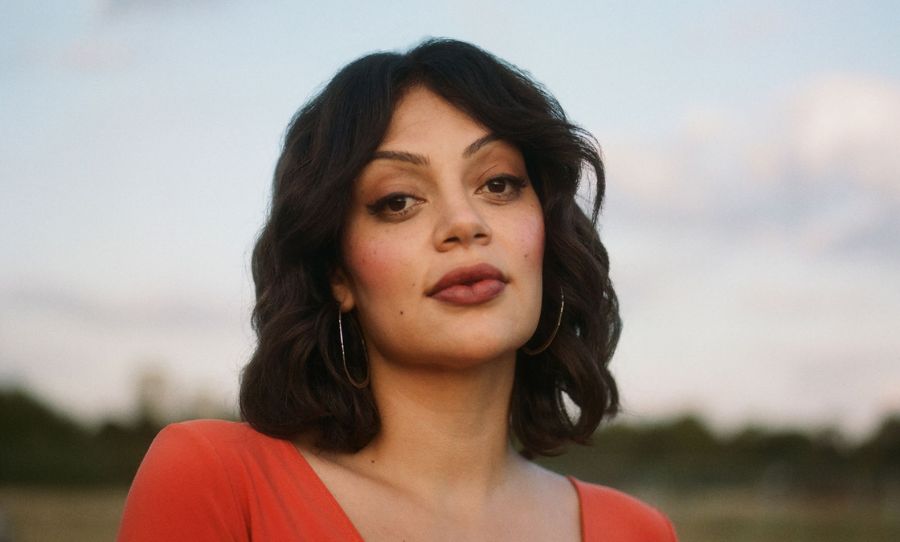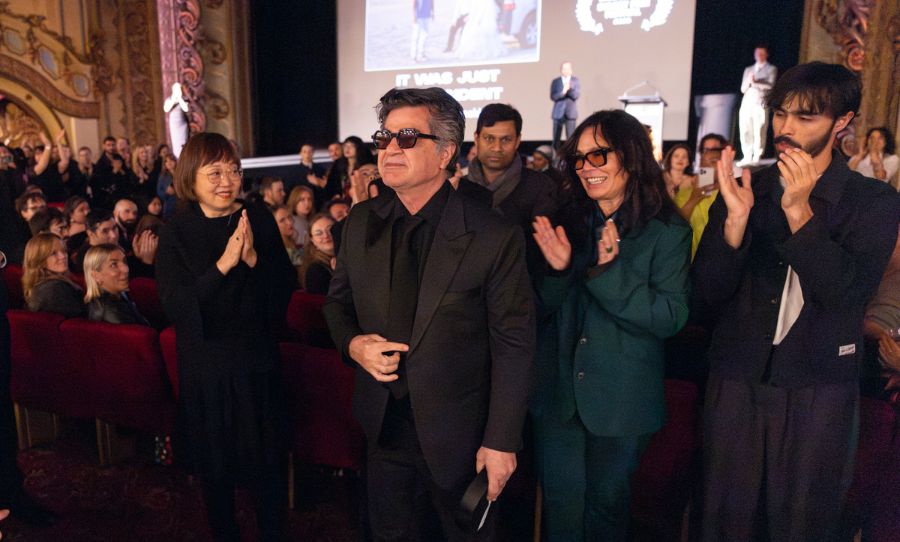Sex in music has become as customary as morning coffees and evening movies. However, the journey up to this point is anything but.
There are a few surefire ways to boost your dopamine levels. One of them is sex. Another is listening to some damn good music. Some of you rockstars regularly combine the two – good shout. Unsurprisingly, philosophers have actually been mapping their intersection for a while. Charles Darwin argued that music was a defining catalyst for sex and that the melodious songbird became an inspiration for mates seeking to “court and spark”.
Sure enough, sex and music today have become irreversibly intertwined. You can flip the dial to any hit radio station, day or night, and explorations of sex will reach your eardrums in only a matter of seconds. But was music always the carrier pigeon for sexual backscattering, or was it simply a lyrical trend that gripped tight and stayed firm? We rolled through the centuries to find out more.
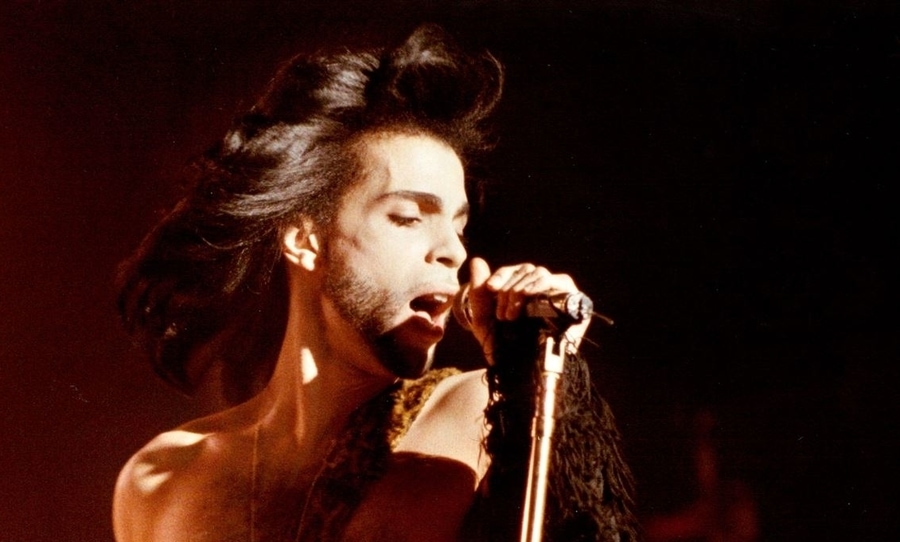
The 1800s
Our journey begins in the magical city of New Orleans. On Sundays, slaves of the French and Spanish were given the afternoon off to socialise in Congo Square. But unlike the British colonies, the French and Spanish didn’t force assimilation, allowing slaves (on Sunday only) to celebrate their rich, musical culture.
They brought bamboulas, bells, and various other instruments into the summer heat, dancing and singing ’til the night was dark. As a result, Congo Square became unanimous for its music. Over time, African rhythms were merged with other evolving musical styles, such as European folk and, eventually, the piano-pounding antics of Tin Pan Alley.
Throughout these weekly gatherings, music became more playful. More daring. More liberated. More exciting. Sheet music was discarded for improvisation, giving wind to the distinguished genre of New Orleans jazz, and of course, rhythm and blues. But we’ll get to that later.
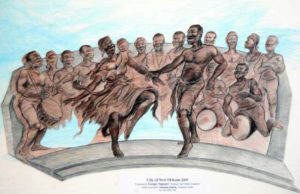
The 1900s
In Spring 1909, Tin Pan Alley musicians Harry Von Tilzer and Jimmy Lucas recorded their viral hit, “I love, I love, I love my wife – But Oh! You Kid! onto wax. Up until this point, innuendos and allusions of sex had been sung, but never so brazenly.
This opéra bouffe didn’t just openly address sexual promiscuity, it revelled in it. The lyrics jested at adultery with newfound slang and frisk: “Kiss me quick or else I’ll have to scold you.”
Take a listen:
This was long before music copyright, so copious flocks of artists jumped on the bandwagon left and right, recording their own spin-off versions and parodies. The total absence of moralism became the tune’s undeniable driving force, but also its downfall.
Following the release, one Los Angeles judge actually deemed the refrain “Oh, You Kid!” a disturbance of the peace, and grounds for imprisonment. Pushback steered explicit sexual lyricism in music out of the mainstream for a few decades, left mostly to black artists and audiences. Sure, the flapper ’20s opened the gates to New Orleans jazz crooning, but not to the same outlandish degree as Oh, You Kid!
This was all until one white dude brought it back… any guesses?
The 1950s
In 1954, Sun Records producer Sam Phillips had quite the lightbulb moment. Entranced by the liberated emotions of African American music – the very music that blossomed in Congo Square, he enlisted Mississippi-born stud, Elvis Presley, to perform it.
Segregation and racism were looming large in the ’50s, and white audiences would only connect to rock and blues if a white man performed it. Subsequently, Presley’s cultural impact was immeasurable. We’re sure your grandparents would have stories to tell.
In 1956, Presley performed his hit Hound Dog on the famous Ed Sullivan Show. Presley swayed his way through it with a rebellious swagger, thrusting his pelvis forward and forever altering the anatomy of rock and roll.
‘Rock and Roll’ was already well-understood slang for the sexual act, but Elvis exposed the sexual connotations of rock music to young, white, suburban audiences. TV channels were flustered by the Sullivan performance and instructed to film Elvis from the waist up in future, but it was far too late. The sexualised rock and roll movement was now ingrained in the minds and bodies of the youth.
Traditional, male-led dancing was replaced with hip-swaying Elvis mimicry and “the twist”. Indeed, the twist doesn’t exactly scream progressive today, but these individualistic dance moves were key drivers of the ’50s counterculture. At long last, blues and rock were centre stage – and sex was only a needle drop away.
The 1960s
Psychedelics. Anti-war protests. A moon landing. The ’60s were awash with progressive ideals, and the decade’s musical output is potent evidence that the times were indeed a-changing. So, how frequently did sex splatter onto the emerging canvas of classic rock? The answer is plenty.
The Beatles initially kept their sexual musings sanitary, playing it safe to reach a wide population. “I wanna hold your hand” (1964) was where they began, but by 1966, Lennon was elucidating his real-life affair on Norwegian Wood.
Album opener Drive My Car contained some of the most obvious – if a little cutesy – sexual references of all time: “Baby you can drive my car, and maybe I’ll love you – Beep beep’m beep beep yeah!” You’re not fooling anyone, Sir Paul.
There are conflicting accounts regarding the composition of "Norwegian Wood," but all parties seem to agree that John Lennon wrote the opening couplet, "I once had a girl/Or should I say she once had me?"
What no one admits is that's a fuckboi lyric, John.
— Alex Ruiz (@A_X_RUIZ) February 6, 2019
Not only were artists talking about sex more incessantly, artists were becoming sexual figures themselves. A Village Voice writer dubbed Jim Morrison of The Doors the “first major male sex symbol since James Dean died and Marlon Brando got a paunch”. A drug-addled Robert Plant howled like a dog on heat. Shred mogul Jimi Hendrix throttled our imaginations with tongued guitar. The Sex Pistols were… the sex pistols.
Magazine porn had also recently become widely available, loosening people’s sensitivity towards sex. Artists were driving the sex-crazed masses, even though swearing was still heavily censored on commercial airwaves. Then came the western world’s sexiest decade of all.
The 1970s
I like to think of ’60s music as foreplay for the debauchery of the ’70s. Sex was no longer cheekily embedded in verse – now it was the selling point of a track. So let’s kick things off with the soul movement from talents like Al Green, Stevie Wonder, and Marvin Gaye.
These artists made their music ultra smooth and extra sultry, always looking dapper on their sleeve art. To this day, Al Green’s Let’s Stay Together is one of the most popular tracks for lovemaking. And who can forget the hair-raising salaciousness of the Starland Vocal Band’s Afternoon Delight?
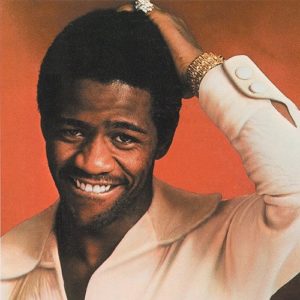
Meanwhile, rock and rollers continued to establish a culture of hedonism, wearing outrageous clothing onstage, only to shed it off and fuck like rabbits when the encore wrapped. The introduction of the birth control pill had also given both parties more peace of mind, totally reshaping society’s sexual conventions.
Then there was Fleetwood Mac, a deadly cocktail of divorce and cocaine-drenched lyrics of deliciously untamed proportions: “shacking up is all you wanna do”. Eeesh!
While tales of rockstars’ sexual exploits were (and still are) viewed as impressive, a large crop of their lyrics from the time period reveal some grossly outdated fantasies. For example, the Rolling Stones’ Brown Sugar fetishised a black slave, (“Brown sugar, how come you taste so good?). The band recently kicked this infamous track from their live shows – smart move.
Lola from The Kinks was divisive, singing of a night dancing with a transgender person: “when she squeezed me tight, she nearly broke my spine”. Even Sir Elton John dished some ill-conceived ideas on interracial relationships in Island Girl, “what are you wanting with the white man’s world?”
Overall, we can be extremely grateful for the new sexual territories explored in the ’70s. Boundaries were crossed, which sparked meaningful conversation and eventual social change. However, some boundaries were crossed thoughtfully. Others, in meagre taste.
The 1980s
Now that sex was teeming the airways, an inclination for instrumentation to reflect this desire was surfacing. Sure, electric guitars were sexy, but they didn’t work the crowd into a feverish sweat like dance music. So sure enough, synthesizers, drum loops, and bright vocals took hold, forming that iconic ’80s sound we know today.
Of all the ’80s superstars, few were as iconoclastic as Madonna. The New York Times dubbed her a “sexual goddess” in 1998, “a barometer of culture that directs the attention to cultural shifts, struggles and changes”. Her single Like A Virgin brought much-needed female agency to the sexual equation, its lyrics teetering between provocative and ironic for maximum cultural impact. So what does “like” a virgin entail? That’s for you to decide.
Elsewhere, an androgynous Prince was giving the rockstar sex symbol a refreshing makeover. Lyrics like “our clothes, our hair, we don’t care” helped amp up the notion that our identity should be just that – our own.
In the world of disco, sexual blatancy was about as common as nosebleeds in the club bathroom. George Michael’s percussive I Want Your Sex spoke of the act like a Sesame Street educational: “sex is natural, sex is fun”. Even better, Kool & The Gang’s Get Down On It was a pioneer of the fellatio thesaurus.
That’s not to say that the ’80s didn’t uncover new ground. Michael Jackson’s magnum opus Billie Jean explored the aftermath of one-nighters with mystery and suspense while still tearing up the dance floor. Meanwhile, Culture Club’s Karma Chameleon pieced together brilliantly vivid metaphors describing the alienation experienced by LGBTQI+ individuals.
“They were written about my relationship with Jon, and they were also written about being a gay man in a homophobic world,” Boy George told Rolling Stone.
The 1990s
While Madonna and Prince were rewriting gender expectations, many popular artists of the ’90s failed to explore sexual liberty with redemptive motives. Yes, R Kelly’s Sex Me was silky smooth, wine sipping, foreplay magic, but it was also short-sighted. As we know now, he was an abuser.
On a more positive note, Salt-N-Pepa’s Let’s Talk About Sex dished out truths that a nation desperately needed to hear. The “playful safe-sex anthem” (Steve Huey, AllMusic) emphasised that censoring discussions around sex led to less educated choices, such as unprotected sex.
Earvin (Magic) Johnson had just retired from NBA due to AIDS, and Freddie Mercury of Queen had recently passed from the disease. Naturally, the public’s opinions and behaviours regarding AIDS needed direction – stat. Salt-N-Pepa used the soothing power of R&B to get the train moving.
On the male front of ’90s R&B and hip-hop, lyrics on shagging weren’t as inspired as they could have been. While NWA had paved the way for cut-throat honestly on real issues, these ideals didn’t traverse into the land of gender attitudes. It was the golden age of hip-hop, but misogyny was running rampant, just ask Snoop: “Bitches ain’t shit but hoes and tricks, lick on these nuts and suck the dick.”
The 2000s
Music marketing was getting awfully cunning around the 2000s. In a post-Daft Punk industry, he practice of designing an identity around an artist was proving to generate lucrative sales. Making good music wasn’t good enough anymore. An artist needed an image, mystique, or cultural capital – a lifestyle and a personality for fans to latch onto.
Jack Banks predicted this priority shift in 1996, based on MTV’s progression: “How they looked became more important than how they sounded”.
Speaking of looks, guess which marketable attribute was most valuable? That’s right, sex. Step aside lemons, make way for the pop queens and boy bands.
Repping bedazzled denim jackets and ungodly leather pants, NSYNC sang about their dream girls, indirectly prompting female audiences to imagine themselves in the girls’ position (notice that the girls in these songs are never given names).
Comedian Bo Burnham shone a light on this “cleverly constructed rouse, designed by a marketing team, cashing in on puberty and low self-esteem” in 2014, highlighting its lingering effectiveness.
Meanwhile, pop queens were clawing for the public’s attention with cultural extremity. Britney Spears’ team dressed her in a school girl outfit and made her “a slave 4 U”. Katy Perry arguably exploited lesbianism in I Kissed A Girl to hit that cultural shock factor.
Meanwhile P!nk utilised female agency as an extremity, letting the world know that she doesn’t “wanna be a stupid girl”, “flipping her blonde hair back”.
The 2010s
Perhaps it’s recency bias, but to me, the ’10s felt like the first time such a diverse range of sexual experiences managed to chart. Of course, sex was mostly portrayed as pleasurable, but occasionally, it was used as a catalyst to address experiences of ugliness, torture, and regret.
However, artists still needed to be cautious. The culture of pedophilia and misogyny embodied by the rock and roll groups of the past simply wasn’t appropriate anymore. Contemporary artists had pressure to hold themselves to a higher standard to avoid media hit-pieces, cancel culture, and the like.
Remember Robin Thicke’s impulsive contribution to rape culture, Blurred Lines? Yeah, that guy had it coming… meanwhile, other male artists were doing much better.
Pharrell addressed “Blurred Lines” in GQ’s “New Masculinity” issue, saying controversy over “rapey” lyrics he co-wrote helped teach him “we live in a chauvinist culture.”
“Hadn’t realized that. Didn’t realize that some of my songs catered to that. So that blew my mind.” pic.twitter.com/HYukimheve
— AJ+ (@ajplus) October 14, 2019
Ed Sheeran’s The A Team humanised sex work, replacing disapproval and objectification with empathy (“it’s too cold outside for angels to fly”), while Alex Cameron manifested the ironic double standards in the sex industry in Far From Born Again (“same men that tell her to stop are the same suckers that pay”).
Elsewhere in the pop landscape, Rihanna fearlessly took on sadism with S&M, using it as a metaphor for how the media feeds off pain, which has proven to be indefinitely true. Fellow superstar Beyoncé also exposed husband Jay-Z’s infidelity in spectacular fashion: “he better call Becky with the good hair”… or did she?
Then there was Hozier’s solemn Cherry Wine, which hung the justifications used by victims of sexual violence out to dry: “open hand or closed fist would be fine”. Like Cobain before on Polly, Hozier gave the complex, devastating subject matter the unfiltered realism required to provoke and propel vital discussion.
As the intricacies of songwriting progressed ever further, so did the associated technologies. SOPHIE – a spellbinding talent who shook the worlds of trans visibility and music production alike – used voice modulation to explore her identity as a trans woman.
And parallel to an explosion of countries legalising same-sex marriage, the 2010s also proved critical for the ongoing platforming and celebration of queer artistry. Anthems like Frank Ocean’s Forest Gump, Troye Sivan’s Bloom, Lady Gaga’s Born This Way, or Macklemore’s Same Love reached enormous audiences in and outside of queer spaces, giving the world a push at a time it was sorely needed.
The 2020s
At long last, we reach our contemporary musical climate. We’re obliged to begin with WAP, the cultural reset from Cardi B and Megan Thee Stallion that every man and his dog had an opinion on. Our one-sentence opinion would be that hip-hop was given a fresh narrative, and the track undeniably slaps.
Of course, not all the decorated rappers conjured up the same level of ingenuity. We copped some tired fuckboy tropes from Drake, whose Certified Lover Boy album cover features nine pregnant women. Cringe-inducing lyrics like “you a lesbian girl, me too” feel shortsighted, and contemporary audiences are catching on.
Elsewhere, one of today’s most discussed cultural zeitgeists, social media, is getting its due. Its macro-scale impact on just about everything, including our experiences with sex, is far from lost on today’s more observant artists.
Take The Man Who Married A Robot from The 1975. Paying homage to the digital vocals of Radiohead’s OK Computer, frontman Matt Healy notes our tendency to pleasure ourselves online to avoid loneliness. “Show him the people having sex again” read aloud by Siri is idiomatic 21st-century unease.
// the man who married a robot / love theme: “he would tell himself, ‘man does not live by bread alone’, and then he died. in his lonely house. on the lonely street. in that lonely part of the world. you can go on his Facebook” \\ love #the1975 #abiior pic.twitter.com/oKLHjTllAJ
— 🔎 (@gatoguavagrace) May 15, 2020
That’s one daunting story of sex in the internet age, but here’s another nugget. Indie act Julia Jacklin mulled over nudes in sophomore opener Body, and their tendency to become weaponised, spreading online like currency: “do you still have that photograph? Would you use it to hurt me?”
Following the important foundations laid by previous generations, artists giving song to the LGBTQI+ experience have also been given more space to tell their stories than ever. Lil Nas X interrogated Christianity’s vilification of queerness in Montero (Call Me By Your Name) by twerking on His Infernal Majesty, where his contemporaries such as King Princess and Troye Sivan continue to stand upon the podiums of pop stardom.
The colossal success of Olivia Rodrigo, and her unfettered reactions to heartbreak, is another teller for how our attitudes towards sex are shifting. “Good for you you look happy and healthy” has become a generational mantra, reminding us all of an ageless, unforgiving truth. Sex, or the absence of sex, profoundly shapes our behaviour.
And whenever an artist pinpoints what that “behaviour” is, best light a candle and take a seat.


